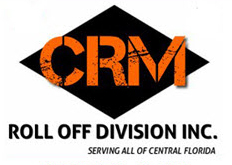Safety Tips for Using Dumpsters on Construction Sites
Construction sites are busy environments with countless moving parts—heavy machinery, workers, building materials, and waste removal tools all sharing the same space. One often overlooked but crucial element of site safety is the proper use and placement of dumpsters. While dumpsters are essential for managing construction debris efficiently, improper handling can lead to accidents, injuries, and compliance issues.
Whether you’re managing a small renovation or a large commercial build, implementing dumpster safety protocols is a must. In this guide, we’ll walk you through practical safety tips for using dumpsters on construction sites to help ensure smooth operations and a secure work environment for everyone.
Why Dumpster Safety Matters
Dumpsters may not seem like a safety hazard at first glance, but they pose a range of risks if not managed properly. These include:
- Trip and fall hazards
- Struck-by accidents from overfilled containers
- Pest infestations
- Fire risks from improper waste disposal
- Vehicle and equipment damage
By incorporating safety-focused planning and training, construction crews can minimize these dangers and keep the project on track.
1. Choose the Right Dumpster Size
Selecting the appropriate dumpster size is the first step in maintaining a safe worksite. Using a container that’s too small increases the risk of overfilling, which can lead to:
- Spilled debris
- Obstructed walkways
- Potential injuries from falling materials
Larger dumpsters can better accommodate heavy or bulky waste like drywall, lumber, or concrete. Be sure to evaluate the volume and type of debris your project will generate and select a size that matches those needs without excess.
2. Place the Dumpster Strategically
Proper placement of the dumpster is key to both safety and efficiency. It should be:
- Located on level ground to prevent tipping
- Away from high-traffic areas to avoid collisions
- Accessible to workers and trucks, but not blocking driveways or emergency exits
- Marked with cones or reflective signs if placed near roads or in dimly lit areas
Make sure the container is placed where it can be easily loaded without requiring workers to lift heavy materials above shoulder height, which reduces the risk of strain injuries.
3. Educate Workers on Safe Use
Every crew member who interacts with the dumpster should understand basic safety protocols. Hold brief safety meetings to cover:
- What materials are allowed and prohibited
- Proper lifting techniques to avoid injury
- How to report hazards or overfilled containers
- Wearing gloves and eye protection while disposing debris
This kind of orientation fosters a safety-first mindset and helps prevent accidents before they occur.
4. Don’t Overfill the Dumpster
It may be tempting to stuff as much waste as possible into the container, but overfilling a dumpster can be dangerous. Overflowing debris can fall out during loading or transport, creating hazards for workers and pedestrians. It can also:
- Damage the dumpster
- Incur extra disposal fees
- Violate local safety regulations
A good rule of thumb is to keep waste below the top edge of the dumpster. If your team is producing more debris than expected, consider arranging for a second dumpster or more frequent pickups.
5. Follow Local Regulations
Different cities and counties have specific guidelines for using dumpsters on job sites. These may include:
- Permit requirements
- Noise restrictions
- Weight limits
- Placement regulations (e.g., distance from property lines or sidewalks)
Failure to comply can result in fines or delays. Always check local ordinances before scheduling a dumpster delivery and ensure your placement and use meet code.
6. Watch for Hazardous Materials
Construction dumpsters are designed for general debris, but not all materials are safe—or legal—to toss in. Common prohibited items include:
- Paints, solvents, and oils
- Asbestos or lead-based materials
- Batteries and electronics
- Propane tanks and flammable chemicals
Disposing of hazardous waste improperly can lead to fires, environmental damage, and serious legal consequences. Use separate containers or contact a hazardous waste disposal service if needed.
7. Keep the Area Around the Dumpster Clear
Piles of debris or clutter around a dumpster create trip hazards and block access. Make it a routine task to:
- Clear paths around the container
- Remove stray nails, sharp objects, or unstable piles
- Maintain good lighting in the area, especially for early morning or nighttime use
This keeps the workspace safe for both your crew and waste removal personnel.
8. Monitor Weather Conditions
Bad weather can affect dumpster safety. High winds, for instance, may blow lightweight debris out of open containers, posing a hazard. Heavy rain can cause dumpsters to sink into soft ground or cause water to accumulate inside.
Use these strategies to mitigate weather-related risks:
- Close the lid or cover the container with a tarp
- Anchor dumpsters if necessary
- Avoid placing them near storm drains or slopes
Inspect the area regularly during inclement weather to ensure the setup remains safe and functional.
9. Schedule Regular Pickups
An overflowing dumpster isn’t just an eyesore—it’s a liability. Set a regular pickup schedule based on your project’s pace and volume of waste. This prevents overflow and minimizes the time that waste sits on-site, reducing the risk of pests, odor, and material spills.
If your project ramps up unexpectedly, most dumpster rental services can accommodate unscheduled pickups or provide an additional container to meet the demand.
10. Use the Right Equipment for Loading
Avoid throwing materials into the dumpster from high places or awkward angles. Instead, use:
- Wheelbarrows or carts for heavy debris
- Ramps for smooth entry
- Skid steers or other machinery when needed
Using proper loading equipment not only protects workers from injury but also helps prevent damage to the container itself.
Conclusion
Dumpsters are an essential part of any construction site, but they come with responsibilities. A focus on safety—from placement and size to worker education and proper loading—can make a significant difference in preventing accidents and ensuring a well-managed work zone.
By taking the time to train your team, plan your waste strategy, and adhere to local rules, you’ll improve safety, efficiency, and professionalism on every job. After all, a clean and organized construction site is not just about appearances—it’s about protecting your crew and your bottom line.

